Windows Phone 8.1 Review
by Anand Lal Shimpi on April 14, 2014 10:00 PM EST- Posted in
- Smartphones
- Microsoft
- Mobile
- windows phone
- Windows Phone 8.1
Action Center
With Windows Phone 8.1, all three of the major smartphone platforms now have some form of a unified notification hub, all accessed by pulling a shade down from the top of the screen. Microsoft’s attempt is called Action Center, and like most aspects of Windows Phone it occupies a middle ground between Android and iOS.
Microsoft’s Action Center gives you direct access to four different shortcuts, the settings menu, and notifications from your apps. All aspects of Action Center are user definable. You can control what shortcuts appear at the top of the shade and you can choose what apps get to display their notifications.
The user customizable launch shortcuts are awesome, although I would like to have one or two more shortcuts to avoid scrolling through the mess that is the Windows Phone settings page.
There’s a clear all button in Action Center that not only wipes the screen clean of all notifications, but also propagates the clearing effect down to live tiles as well. In the screenshot below you see I have two emails in my AnandTech account and nine in my Gmail account:
Clearing all notifications in Action Center clears the unread email counter on both live tiles.
The emails remain unread in the apps themselves, which is what you’d expect. If you want to just clear notifications for a single app, just swipe anywhere over the notifications for that app.
Pulling down on the Action Center also reveals a little more information in the Windows Phone status bar. You now get a battery percentage indicator, today’s date and the name of the cellular network you’re connected to. The status bar no longer automatically hides itself either. WiFi and cellular signal strength, notification (if applicable) and battery indicators are all permanently on display.
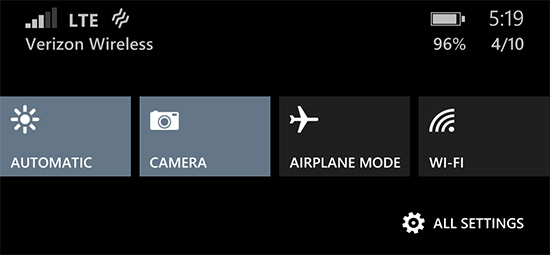
Microsoft also exposes individual volume controls for notifications (including the ringer) and media playback.
Cortana
Apple has Siri, Google has Google Now, and Microsoft has Cortana. Pulled straight out of the Halo universe, Cortana ends up being a mix of Siri and Google Now. Cortana launches in beta with the same sort of basic voice assistance you get with Siri in iOS. Hitting the search button will take you to Cortana, while holding it down automatically puts her in listening mode. You can set reminders (including those based on location), create/move calendar events, ask about nearby shops/restaurants, place calls and dictate text messages.
Anything that doesn’t fall into a category that guarantees a verbal response from Cortana triggers a Bing search. By default all Bing searches are aimed at the web but by swiping to the right you can redirect search towards your device itself. Phone search is universal and it’ll index everything from apps to text messages and emails. Cortana features integrated music recognition as well. Just tap the music icon and within a few seconds, if the track exists in the Xbox Music store it'll be identified.
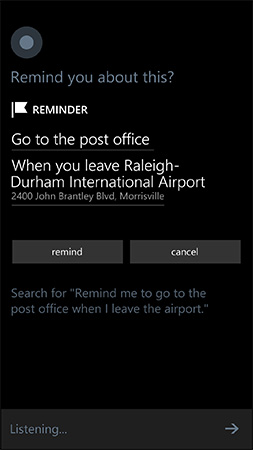 |
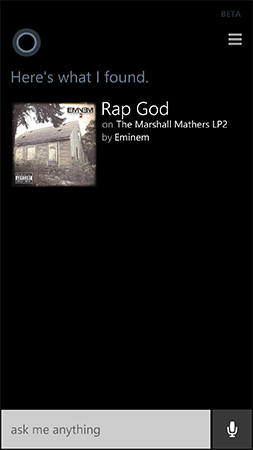 |
Cortana’s basics work well thanks to Microsoft’s extremely accurate (and speedy) voice recognition. You don’t have to use voice to interact with Cortana, typing is supported as well.
Cortana can prevent incoming notifications from surfacing while you sleep or are in a meeting using a feature called quiet hours. Similar to iOS6’s Do Not Disturb mode, Quiet Hours can be configured to allow certain contacts to break through. In an expansion over what iOS DND can do, Cortana can also instruct contacts who aren’t a part of your “inner circle” to text with a certain passphrase in order to break through quiet hours. Similarly, if any contact calls twice within a 3 minute period they’ll be exempted from quiet hours as well.
Unfortunately Cortana’s usefulness, much like Siri’s, can be quite limited. She’s great for settling alarms and creating meetings, but deeper natural language conversations just can’t happen yet. Cortana can save you from typing something, but that’s about the extent of her usefulness as a voice interaction tool.
This is where Cortana’s notebook comes in handy. If you allow her to, Cortana will look at your emails and monitor your behavior to determine what information she should float up to your attention. The result is a Google Now like experience, where you get things like reminders of upcoming flights based on emails in your inbox, as well as estimated commute time based on where Cortana thinks you live and work. You can give Cortana hints about your interests and she’ll use Bing news to grab headlines you might want to read. I feel like this is ultimately where these virtual digital assistants will end up, but we’re still at a very early stage in their evolution.
It’s interesting to note that Apple is now the only major smartphone player without a notebook/Google Now-like feature on its mobile platform. It’s no coincidence that the two players that do have that feature also derive revenue from selling advertising against user data. Once features like Cortana and Google Now get good enough, the obvious next step is to send highly targeted advertisements to the end user. It’s not necessarily a bad thing, but it’s clear that’s going to be the next major jump in advertising on mobile.



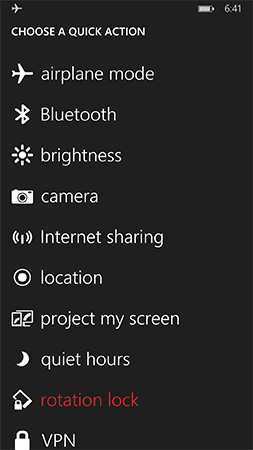
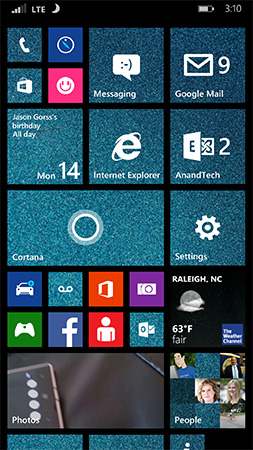
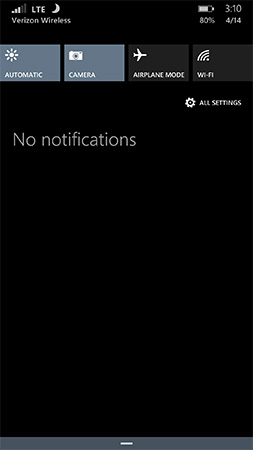
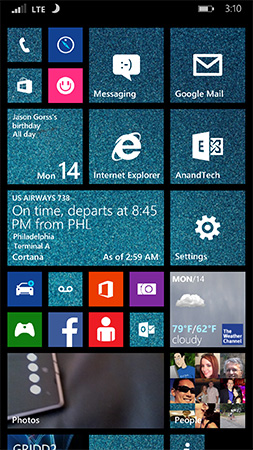
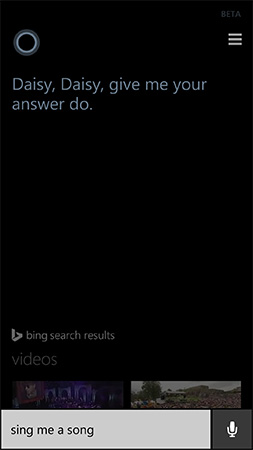
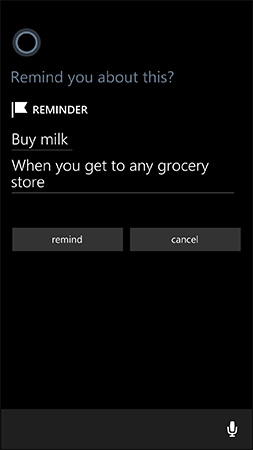
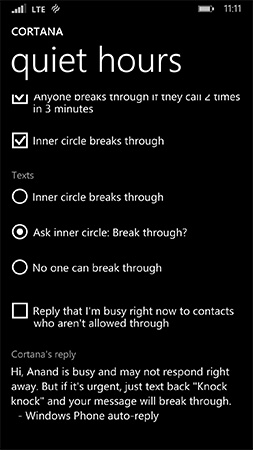
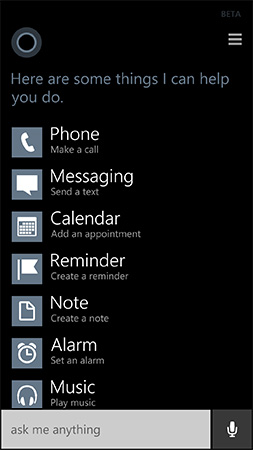
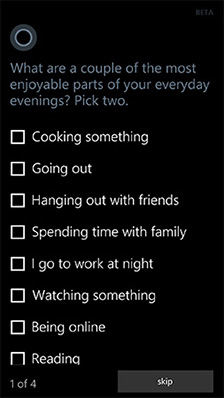
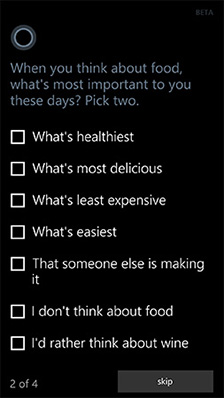
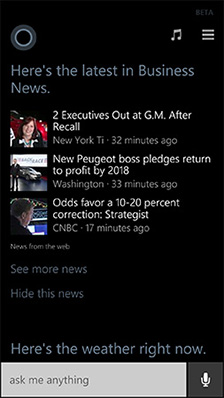








111 Comments
View All Comments
BSMonitor - Tuesday, April 15, 2014 - link
Microsoft needs to throw serious $$ at marketing to developers. Looked at my brother's phone for a few simple apps, Comedy Central, Cosmos, Clash of Clans, etc... No go. It's not the small crappy game developers we are talking either. It is the big corporations. Corporations who are "competing" (aka throwing cash) by having their App presence out there.They aren't even creating Apps for Windows. I.e. Chase, Discover, Direct TV, etc etcApple has done to Microsoft what Microsoft did to them in the 80s/90s.. "See, all this software, it will run on ours, but not on yours".
For me to switch. I would need x86 Windows Phones.
Duraz0rz - Tuesday, April 15, 2014 - link
Chase actually has a mobile app since the WP7 days. I think they even keep it up to date."For me to switch. I would need x86 Windows Phones."
For what?
MikhailT - Wednesday, April 16, 2014 - link
He's probably trying to emphasize the important of the ecosystem behind the OS, not the actual x86 hardware. Think of Surface Pro, it's a great tablet with a big ecosystem because you can switch to the desktop to download x86 apps for any apps missing from the Windows App Store.For him to consider switching to WP, it'd need to have a large amount of software comparable to having a Surface Pro shrunken to the phone model. Right now, it's just not there, it's missing too many apps.
Duraz0rz - Wednesday, April 16, 2014 - link
That would make sense. More often than not, the sites he mentioned have a good mobile website (Discover and American Express have a good one, IIRC), but we are missing "cool" apps like Lyft and Uber.Arbie - Tuesday, April 15, 2014 - link
I have a Nokia 520 Win8 phone and like it very much, especially at the $150 total price for an unlocked international version.My main gripe is lack of a WHITELIST feature. Why can't a smartphone check incoming calls against a list and only put my friends through? I get dozens of idiot spam texts and voicemails.
--> Whitelist should be a no-brainer fundamental built-in capability of every modern phone and certainly of every smartphone.
Oh, and never mind trying to suggest such an amazing idea to MS - their feedback website has evidently been hacked (for a year or so) and is submerged in tens of thousands of bogus requests. Eventually they may figure this out... they are a fairly large company after all, with some tech knowledge.
Duraz0rz - Tuesday, April 15, 2014 - link
Not sure where you live where you get dozens of spam texts and voicemails. I don't get that here in the US, but I'm sure the telco blocks a lot of that here.If you were in the US (or wanted to set up your phone so you can use Cortana), you can use Cortana as a whitelist of sorts. Have Quiet Hours on all the time, set up your Inner Circle with the people you want to get through, and have their calls and texts always break through quiet hours.
Tewt - Tuesday, April 15, 2014 - link
Get Magikmail for your whitelist feature. I first used it when I had a Samsung Focus and continued to use it on my Galaxy S3 and will get it again when I purchase a WP8 phone. I may have missed it but I did not see that Android had this feature built in either.dazaein - Wednesday, April 16, 2014 - link
A whitelist feature is included in 8.1. "Quiet Hours + Inner Circle." But it sounds like you just need a clean sim number..erple2 - Sunday, April 27, 2014 - link
When my wife finally entered the smartphone era (2012), I gave her my old phone sgs2 on at). I had to get her a new number, as she didn't want her other number from a couple of states away. The first two numbers she got received spam texts from hourly (first number) to every 4-6 hours. The third number I got for her workedLike a charm. Either way my experience with the provider (att) taught me two things: they don't block ANY text messages at all (for me, it was 20 cents per text message so they have a vested interest in NOT blocking junkspam, and their blocking services, which are a blacklist only, costs money per month), and its easy to get a recycled phone number that used to subscribe to text ads.
In other countries, text spamming is illegal.
SpartanJet - Tuesday, April 15, 2014 - link
Really looking forward to purchasing a Windows 8;1 phone. It has everything I want in a phone OS and I can finally completely remove myself from any gogle service once I get rid of my ADroid phone. I just hope Tmobile gets a high end Windows phone similar to the 1520 or else I'm going to have to switch carriers.